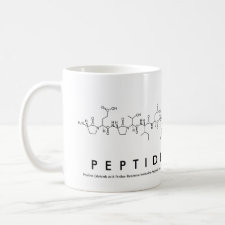
Authors: Alizadeh T
Article Title: Application of electrochemical impedance spectroscopy and conventional rebinding experiments for the investigation of recognition characteristic of bulky and nano-sized imprinted polymers.
Publication date: 2012
Journal: Materials Chemistry and Physics
Volume: 135
Issue: (2-3)
Page numbers: 1012-1023.
DOI: 10.1016/j.matchemphys.2012.06.007
Alternative URL: http://www.sciencedirect.com/science/article/pii/S0254058412005652
Abstract: In this work, recognition of target molecules by nano- and micro-sized molecularly imprinted polymers (nano-MIP and micro-MIP) was investigated by using electrochemical impedance spectroscopy (ESI). Modification of carbon paste electrode (CP) with promethazine (PMZ)-imprinted and non-imprinted polymers (MIP and NIP) influenced its ESI behavior, in both low and high frequency regions, approximately in the same manner. However, adsorption of target molecules on the electrodes, modified with different polymeric materials, influenced dissimilarly their ESI behaviors. Target molecules adsorption decreased bulk resistance of the MIP-based electrodes, whereas sorption of cross-reactant molecule increased this parameter of the electrode. This effect for bulky MIP-based electrode was more than that for the nano-MIP electrode. Swelling of the MIP materials, after target molecule recognition, was proposed as a main proof for this observation. However, bulk resistance of the NIP-based electrodes increased with adsorption of both target and foreign molecule. Swelling experiment indicated that in the presence of an organic solvent the bulky MIP particles expanded more than the nano-sized MIP. This led to erased memory effect in the bulky MIP. Scatchard plot showed that the recognition sites of the nano-sized MIP particles had more affinity to target molecule, compared to those of the bulky MIP particles. The prepared MIP based electrodes were used to plot the calibration curves based on the variation of bulk resistance of the electrodes versus PMZ concentration. Although, the MIP nanoparticles showed higher affinity for the target molecule the bulky MIP-based electrode was capable to determine target molecule at lower concentrations
Template and target information: promethazine, PMZ
Author keywords: Nano-sized, imprinted polymer, impedance spectroscopy, Promethazine, recognition mechanism



Join the Society for Molecular Imprinting

New items RSS feed
Sign-up for e-mail updates:
Choose between receiving an occasional newsletter or more frequent e-mail alerts.
Click here to go to the sign-up page.
Is your name elemental or peptidic? Enter your name and find out by clicking either of the buttons below!
Other products you may like:
 MIPdatabase
MIPdatabase









